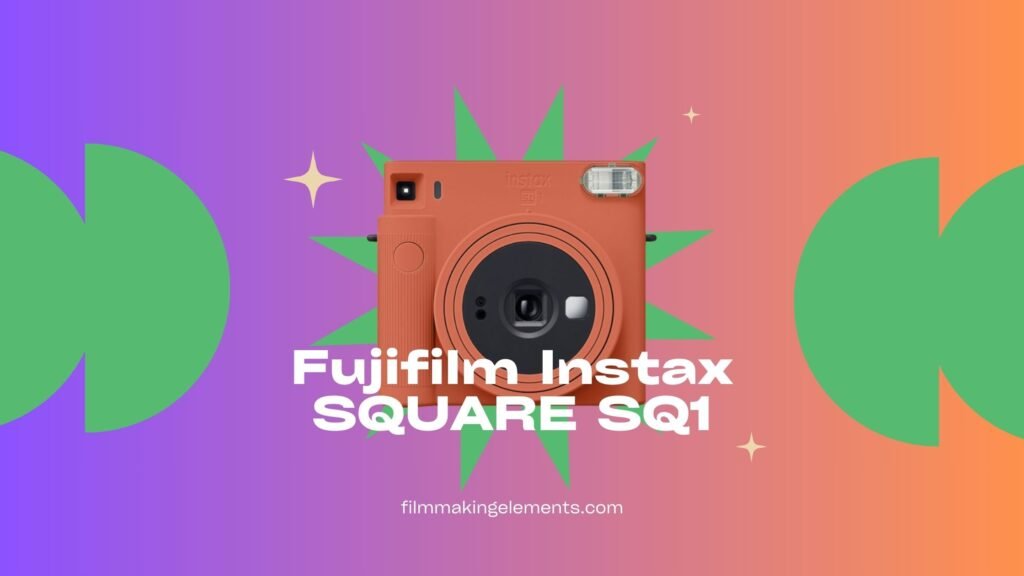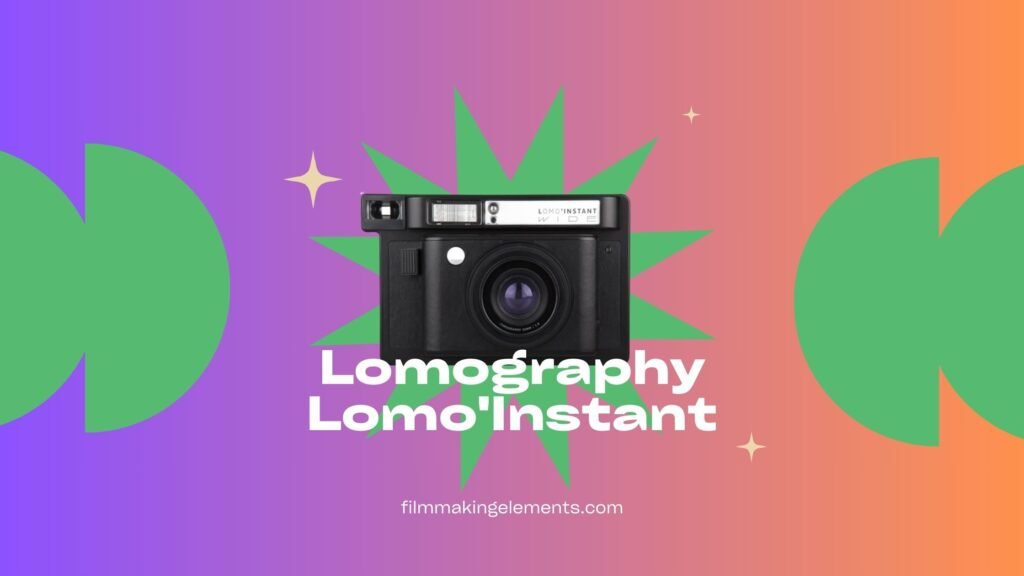There’s nothing like snapping a picture and seeing it come to life in your hands. But I also like to try new things. That’s why I wanted to share with you my top three alternatives to the Fujifilm Instax Mini 40. These are cameras that have different features, styles, and film formats, but still give you the thrill and joy of instant printing. Let’s check them out.
1. FUJIFILM INSTAX Wide 300

Having extensively worked with various instant cameras, I’m often asked for advice on the best models to choose. Among the numerous options, the FUJIFILM INSTAX series is a favorite for many photography enthusiasts. Why I Recommend the FUJIFILM INSTAX Wide 300 as an Alternative to the FUJIFILM INSTAX MINI 40:
Film Format
My first observation pertains to the film size. The Wide 300 uses Instax WIDE film which has a film size of 86 x 108 mm and a picture size of 62 x 99 mm. This size advantage lets you capture more expansive scenes or group photos. Conversely, the MINI 40 utilizes the Instax mini film, measuring 54 x 86 mm for the film size and 46 x 62 mm for the picture size. This smaller format is easy to carry, making it handy for those spontaneous moments.
Image Quality
In terms of image capture, both cameras utilize ISO 800 film sensitivity with automatic exposure control. However, the Wide 300, with its 95 mm focal length and f/14 aperture, allows me to capture slightly sharper images, particularly at greater distances. The MINI 40, having a 60 mm focal length and f/12.7 aperture, does have its unique feature: a dedicated selfie mode focusing between 0.3 – 0.5 m. It’s great for those close-up group shots or self-portraits.
Camera Size and Style
The Wide 300, weighing 612 g and measuring 167.8 x 94.7 x 120.9 mm, exudes a vintage aura with its black body punctuated by silver accents. In contrast, the MINI 40 is more lightweight at 330 g and measures 104 x 121 x 65 mm, boasting a chic design complete with a black body and brown leather-like texture.
Lens and Focus
Focusing mechanisms in both are quite adaptive. The Wide 300 can toggle between normal (0.9 – 3 m) and landscape mode (3 m – ∞), with an added close-up lens for subjects up to 40 cm away. Meanwhile, the MINI 40 adjusts from a normal range (0.3 m – ∞) to a specialized selfie mode (0.3 – 0.5 m).
Battery Life
Both cameras rely on two AA-size alkaline batteries (LR6). Impressively, the Wide 300 can shoot up to 100 photos per set of batteries. In contrast, the MINI 40 maxes out at about 30 shots.
Additional Features
One of the Wide 300 features I appreciate is its flash on/off control, a brightness dial for exposure tweaks, and the ability to mount it on a tripod. The MINI 40, though, includes a selfie mirror (a boon for framing self-portraits) and a film counter with a confirmation window, helping track film usage. Plus, the INSTAX UP! app compatibility for both models is a game-changer, allowing digital archiving and sharing of your shots.
Price
While the Wide 300 is priced at approximately $132, the MINI 40 is slightly more affordable at around $100. Considering the film packs, the MINI 40 is also more pocket-friendly at $8.4 for 20 sheets, whereas the Wide 300 film packs are around $14.4 for the same quantity.
2. Fujifilm Instax SQUARE SQ1

Why Fujifilm Instax SQUARE SQ1 is a Great Alternative to the FUJIFILM INSTAX MINI 40? Let’s find out:
Film Format
From my hands-on experience, the most distinguishable difference is the film format. The SQUARE SQ1 uses Instax SQUARE film, yielding square prints of 62mm x 62mm (2.4in x 2.4in). These are reminiscent of classic Instagram shots. In contrast, the MINI 40 opts for the Instax mini film, producing more compact, rectangular prints at 62mm x 46mm (2.4in x 1.8in).
Image Quality
I’ve found that both cameras champion comparable image quality. The Instax film renders vivacious colors with a slight grain, creating that coveted retro feel. Even though they utilize the same film type, the SQUARE SQ1’s aperture of f/12.6 slightly edges out the MINI 40’s f/12.71. This minor difference lets the SQUARE SQ1 excel subtly in low-light scenarios.
Camera Size and Style
The SQUARE SQ1 is a tad bulkier, measuring 130.7mm x 118.6mm x 57.5mm and weighing 390g. It presents a boxy yet vibrant design. On the other hand, the more svelte MINI 40, at 104mm x 121mm x 65mm and 330g, sports a retro design draped in faux leather – a personal favorite aesthetic of mine.
Lens and Focus
After numerous snapshots, I noticed the SQUARE SQ1’s focal length of 65.75mm slightly narrows the field of view compared to the MINI 40’s 60mm. Interestingly, both share a minimum focus distance starting from 0.3m, with a selfie mode extending up to 0.5m. Their incorporated selfie mirrors are a godsend for framing those perfect self-portraits.
Battery Life
Here’s where things deviate. The SQUARE SQ1 employs two CR2 lithium batteries, powering up to an impressive 300 shots. The MINI 40, using two AA-size alkaline batteries, caps out at about 100 shots. As a frequent traveler, I appreciate the longevity of the CR2 batteries, although AA batteries are undeniably easier to procure.
Additional Features
I particularly enjoy the lens ring of the SQUARE SQ1, functioning both as a power switch and mode selector. It’s an intuitive design feature absent in the MINI 40. However, both cameras share a film counter, film pack confirmation window, automatic flash, and a flash charging lamp – essential tools for any Instax enthusiast.
Price
Lastly, the SQUARE SQ1, priced at $119.95, is slightly pricier than the $99.95 MINI 40. A justified cost given the SQUARE SQ1’s premium film format. However, it’s noteworthy that Instax SQUARE film generally incurs a higher cost than its mini counterpart.
3. Lomography Lomo’Instant

In my extensive experience with instant cameras, I’ve found the Lomography Lomo’Instant to be an excellent alternative to the FUJIFILM INSTAX MINI 40. Allow me to delve deeper into this assertion, giving you a comprehensive breakdown of both cameras based on my hands-on expertise.
Film Format
I’ve used both the Lomo’Instant and INSTAX MINI 40 and observed that they both conveniently utilize the Fujifilm Instax Mini instant film, with a noticeable exposure area of 62 mm x 46 mm. The film is both accessible and user-friendly. After a quick snap, I’ve enjoyed seeing the film develop vibrant and sharp images in just about 90 seconds.
Image Quality
When it comes to lens specification, the Lomo’Instant boasts a 27 mm f/8 lens (equivalent to a 35 mm lens), which offers a slightly wider view than the 60 mm f/12.7 lens on the INSTAX MINI 40. This broader perspective is fantastic for capturing expansive scenes. Additionally, the Lomo’Instant’s direct optical viewfinder is notably more accurate compared to the real image finder of the INSTAX MINI 40. While both cameras have an automatic exposure control, the flexibility I’ve experienced with the Lomo’Instant, especially with its ability to turn off the flash in any mode, has offered a heightened creative freedom.
Camera Size and Style
The Lomo’Instant has a distinct aesthetic advantage; it’s not only slightly lighter but also comes in a variety of stylish editions. Whether it’s the Sanremo, Honolulu, or the Automat Glass Magellan edition, there’s an array of designs to match your style. On the other hand, the INSTAX MINI 40 offers a timeless, classic design primarily in black with silver accents.
Lens and Focus
Selfie enthusiasts will appreciate the built-in mirror on the Lomo’Instant, facilitating easy framing. Its focus range is also impressive, allowing for close-ups as near as 10 cm with an attachment. The additional three lenses – fisheye, portrait, and close-up – are particularly innovative, offering a range of perspectives for every shot. Unfortunately, the INSTAX MINI 40 doesn’t provide such lens versatility.
Battery Life
Powered by four AA-size alkaline batteries, the Lomo’Instant has sufficiently powered me through multiple photo sessions, handling up to 10 Instax mini film packs. Similarly, the INSTAX MINI 40 uses two AA batteries but lasts for about 30 shots. Both cameras conveniently power down after 5 minutes of inactivity, saving on battery life.
Additional Features
Where the Lomo’Instant truly shines is its plethora of creative features. The bulb mode for long exposures and the multiple exposure mode for overlaying images are features I’ve found incredibly innovative. Additionally, its PC sync socket, remote control lens cap, filter thread, and the four colored gel filters all add to the camera’s versatility, making it a dynamic tool for any instant photography enthusiast. These features set it apart, as the INSTAX MINI 40 lacks these creative additions.
Price
For those mindful of budget, the Lomo’Instant offers better value for money. With editions starting at $79 USD and going up to $149 USD for premium versions, it’s generally more affordable than the INSTAX MINI 40 priced at $99.95 USD.
While both cameras hold their ground in the realm of instant photography, based on my personal experience and expertise, the Lomography Lomo’Instant offers a blend of style, versatility, and value, making it a compelling alternative to the FUJIFILM INSTAX MINI 40.
- Also Read: Top 3 FUJIFILM INSTAX MINI 12 Alternatives
- Also Read: Top 3 FUJIFILM INSTAX MINI 11 Alternatives
- Also Read: Top 3 Canon EOS R5 Alternatives





